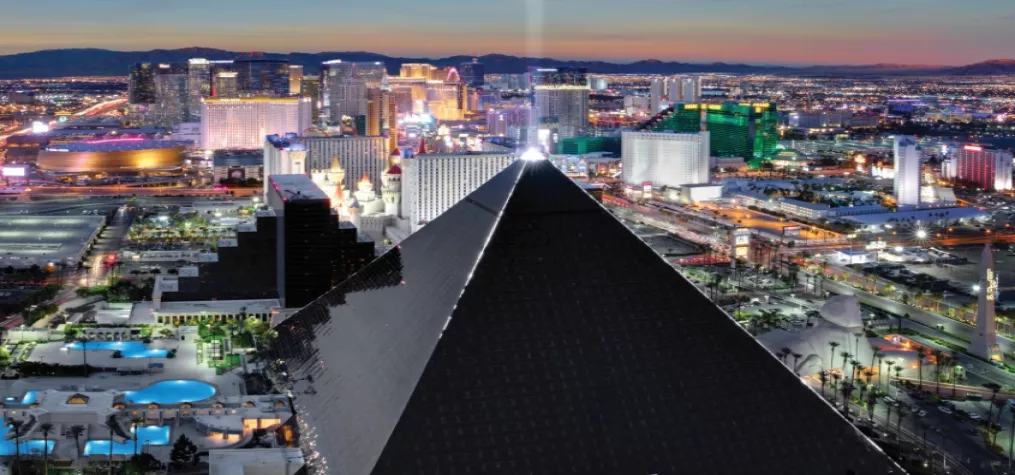Sustainable exhibiting is a powerful way to showcase your brand without impacting the environment. From eco-friendly booth materials to digital marketing and responsible catering, adopting sustainable practices can cut costs, reduce waste, boost your brand’s reputation, and increase customer value. RX’s Global Sustainability Director, Helen Sheppard, shares her top ten steps to help you exhibit more sustainably - minimising your footprint while maximising your impact.
Choose sustainable suppliers
Go for contractors and suppliers who have signed the Net Zero Carbon Events Pledge which commits them to reduce their global GHG emissions by 50% by 2030 and achieve net zero by 2050 at the latest. You can also look for certifications like ISO 14001, ISO 20121, FSC, and B Corp, which indicate responsible environmental and social practices. Assess their use of recyclable, biodegradable, or reusable materials, energy-efficient production, and waste reduction efforts. Look for modular, reusable stand designs and recycling programs. Review their sustainability policies, transparency, and memberships in organisations like the Sustainable Event Alliance to confirm their commitment to green practices. And, because you can’t manage what you can’t measure, ask your supplier to measure the carbon footprint of your exhibition booth.
Plan ahead to design out waste
Sustainability starts with smart planning. Designing your booth with reusable materials ensures a lower environmental impact. Modular components that can be reconfigured for different layouts make a great eco-friendly choice. Consider open plan designs to reduce the need for excess materials like walls. Planning ahead also helps avoid last-minute changes and unnecessary printing, saving both resources and costs.
If you can’t reuse it, recycle it
Reusability should be your guiding rule when designing your stand. Opt for reusable flooring platforms, carpet tiles made from recycled materials (dark colours have a longer lifespan), and furniture rentals to cut waste. Check out lightweight, sustainable materials like recycled cardboard, bamboo, and eco-friendly fabrics - they’re not only greener but also easier and cheaper to transport. Most importantly, ditch single-use materials to make your stand as sustainable as possible.
Ship responsibly
Simple adjustments to your shipping plans can significantly reduce your event emissions. Talk to your suppliers about how your items are transported and look for ways to consolidate shipments to reduce trips – for example, by using the event’s preferred shipping partner. Sourcing materials locally cuts emissions and supports the local economy. For long-distance transport, choose lower-impact options like rail or electric vehicles. Finally, pack efficiently, avoid foam and plastic film, and opt for recyclable or biodegradable packaging to further reduce your environmental impact.
Use energy-efficient lighting and digital displays
Reduce your carbon emissions with energy-efficient lighting and electronics. LED lights use less power, last longer, and cut costs, while energy-efficient screens and light boxes deliver bright, eye-catching displays with minimal energy use. Use reflective surfaces and light colours in your booth design to reduce the need for extra lighting and remember to dim or turn off lighting, screens, and equipment outside show hours.
Cater consciously
Food waste is a big issue at events, but smart choices can make a big difference. Source local, seasonal food to cut transport emissions and support the local economy. Offer low-carbon vegetarian and vegan choices. Swap single-use plastics for reusable water stations or glass bottles. And donate leftovers to local food banks or community projects – many RX events and venues now partner with such schemes to reduce waste and give back.
Go digital
Connecting digitally at trade shows is a smarter, greener alternative to printed business cards, brochures, and pamphlets. It cuts down on paper waste and transport emissions while letting you capture and qualify leads instantly for quicker, more efficient follow-ups. Plus, visitors will thank you for it! At RX events, attendees can simply scan Colleqt QR Codes at your stand to receive your product information digitally––no more heavy tote bags stuffed with brochures, just a seamless, eco-friendly experience. Avoid disposable ‘give-aways’ and choose digital incentives too, such as white papers and sales discounts which can be redeemed on your stand or online.
Sort and recycle your waste
If you’ve followed the steps above, you shouldn’t have too much waste destined for landfill. But you should still have a clear waste management plan outlining how your recyclable, compostable, and general waste will be handled. Work with the event organisers and venue – many now provide clearly marked, colour-coded recycling stations making it easy to sort your waste at the event, and during build-up and break-down. If room allows, do the same for visitors on your stand. Finally, check if the organiser or venue operates any schemes to donate excess food or unwanted stand items and materials to local community projects. It’s a great way to make a difference whilst reducing your environmental impact.
Reduce your travel footprint
The carbon emissions associated with travel can’t be avoided, but they can be reduced. Where possible, choose local employees to staff your stand. Use public transport to travel between the show and your hotel. Prioritise rail over air for longer distances. If you can’t avoid flying and staying over, choose airlines and hotels which have credible Net Zero and sustainability strategies.
Promote your eco-friendly practices
If sustainability is part of your brand, an eco-friendly exhibition stand is a great way to attract and engage visitors and set out your credentials. People are drawn to innovative, sustainable designs, giving you the perfect chance to showcase your brand’s green values and start meaningful conversations. Highlighting your use of eco-friendly materials and practices positions you as a sustainability leader, helping you stand out in a crowded event space. If there’s an award for ‘Most Sustainable Exhibitor,’ why not go for it? Just be sure your efforts are genuine––authenticity matters more than ever.
Don’t miss any event-related news: Sign up for our weekly e-newsletter HERE, listen to our latest podcast HERE and engage with us on LinkedIn!



Add new comment